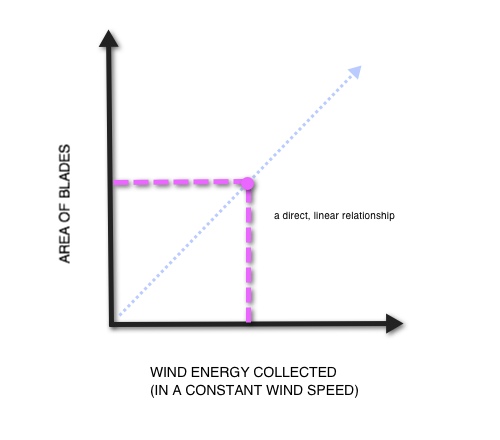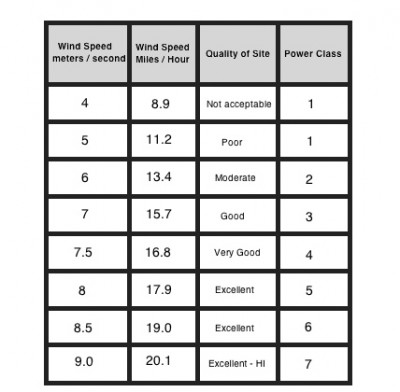Wind Power Class
The wind power class of a wind turbine is a rating system that is used to rank the quality of the location of a wind turbine and the average wind speed of that location.
The higher the wind power class number, the more acceptable the site location will be for a wind turbine project.
Every wind turbine can be assigned a specific power class, but the general rating of a wind turbine generator is difficult to know because there are many dependent factors that determine the electrical output of a wind turbine.
When breaking it down, the two most important factors needed to obtain optimal kinetic energy from the wind are the diameter of the rotor blades and wind speeds.
The greater the diameter of the blades, the greater the area of the space swept by the blades, and the area of the blades has a direct correlation with the output of energy.
Notice from the graph above that as the total area of the blade that is exposed to the wind increases, the wind energy collected will also increase. This increase in wind energy collected enables the blades to absorb a greater amount of kinetic energy from the wind than the blades of a small turbine in the same wind conditions.
Since there is a direct linear relationship between blade diameter (area) and energy output, if we double the area we will double the power output. So, the greater the diameter and area of the rotor blades, the higher the wind power class will be.
Wind speed is also a crucial factor when deciding the power class wind turbine. A wind turbine that is perfectly designed and constructed will create no output unless it is properly located in an area with sufficient winds.
Wind speed is usually measured in meters per second for rating wind turbine locations, which can be easily converted to miles per hour. The chart below shows power class ratings for wind turbines at a given wind speed. The higher the wind speed, the greater the rating.

